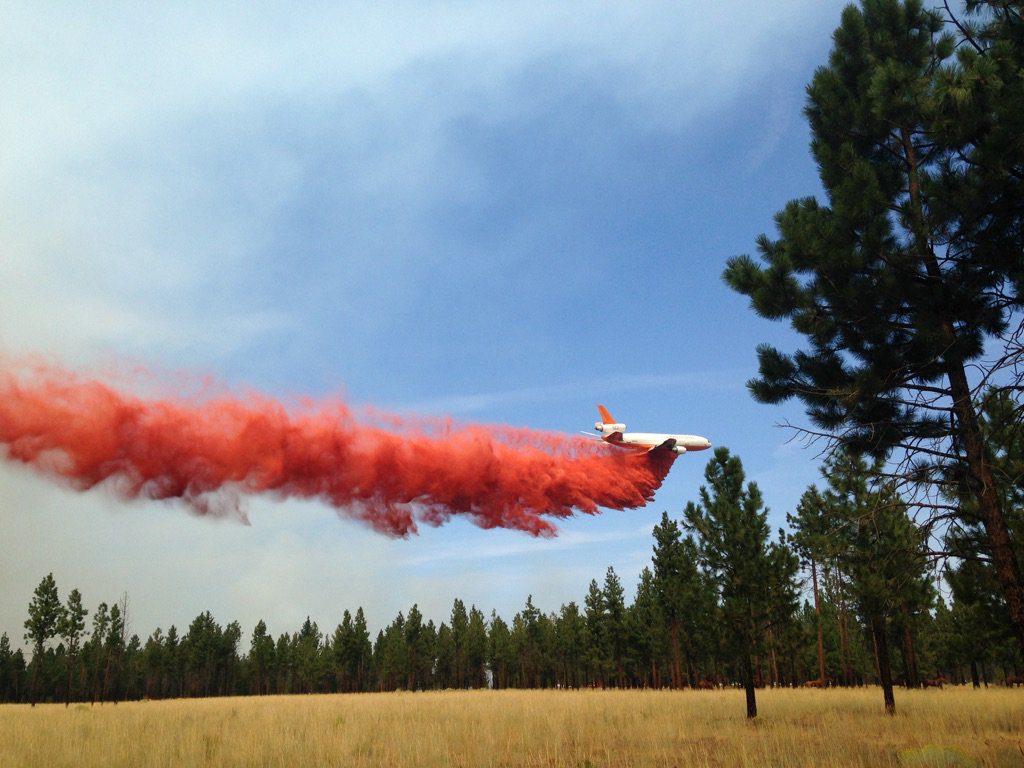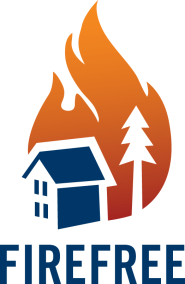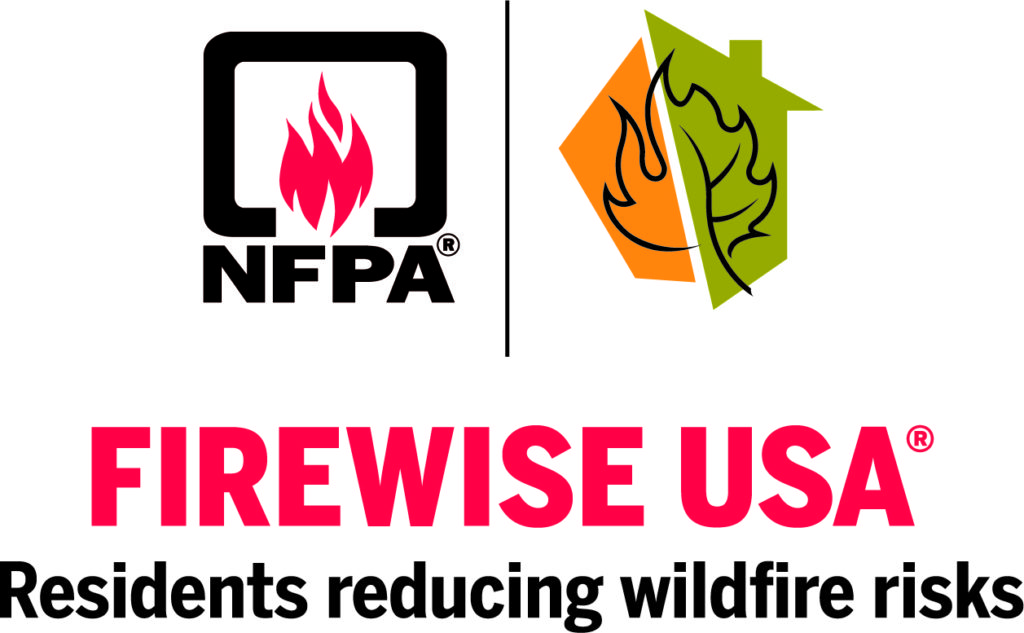Resources
What's the science behind defensible space? Why does it work?
The concept of defensible space was developed by USDA Forest Service fire scientist Jack Cohen in the late 1990s, following some breakthrough experimental research into how homes ignite during large wildfire events.
There are 3 main ways homes ignite during a wildfire:
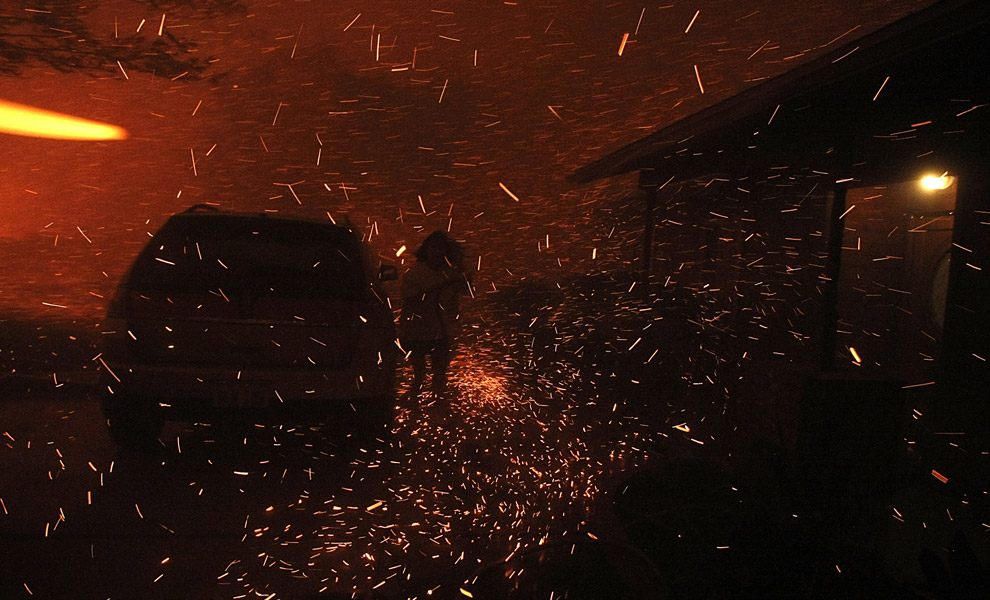
Embers are major culprits: Jack Cohen’s work and further analysis and studies, including experiments sponsored by the insurance industry, show that not only should the radiant heat exposure be mitigated in the home ignition zone, but exposure to embers as well. In fact, all the research around home destruction and home survival in wildfires point to embers as the main way that the majority of homes ignite in wildfires. For that reason, NFPA recommends methods to prepare homes to withstand ember attack and minimize the likelihood of flames or surface fire touching the home or any attachments (fences, decks, porches) as the first place for homeowners to start working to prepare their properties.
Homeowners can reduce the risk of ember ignition by doing a few small things around their home. The first item to focus on is the “fine fuels” around your home. Those are items such as pine needles, leaves, and dry grasses directly adjacent (within 5 feet) or touching your home. Removing these fine fuels from vulnerable areas like the roof and gutters is especially critical to home survival during a wildfire.
The first item to focus on is the “fine fuels” around your home. Those are items such as pine needles, leaves, and dry grasses directly adjacent (within 5 feet) or touching your home. Removing these fine fuels from vulnerable areas like the roof and gutters is especially critical to home survival during a wildfire.
The second item is removing flammable plant species from within 30 feet of your home. Plant species such as ornamental juniper, arborvitae, and bitterbrush are particularly flammable. They are also susceptible to ember intrusion and ignition which will ultimately impact the home they are adjacent to. For other fire-resistant species, visit FireFree for a downloadable guide.
Things such as your patio furniture cushions, bark mulch touching your home’s siding, or doormats can also provide a receptive ember bed during a wildfire. Consider moving your bark mulch away from your home at least far enough that there is no direct contact between your bark mulch & wood siding. Cushions and doormats can be stored away during long summer vacations and moved quickly during evacuation situations.
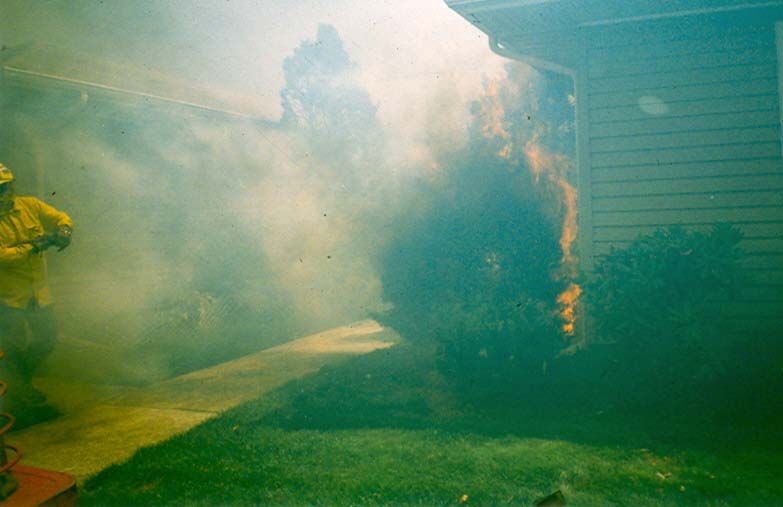
Radiant heat is heat transmitted by radiation as contrasted with that transmitted by conduction (Direct flame contact). Commonly radiant heat is the same kind of heat we feel from the sunshine. When discussing radiant heat, it poses two main concerns for structural ignitability. Windows and siding are most likely to be ignited or impacted by radiant heat from fires near the home.
The radiant heat from flames that are within the first 5 feet of the home can break the glass in a window and penetrate into the interior of a home. Having a dual-pane, tempered glass window offers the best protection because tempered glass does a much better job resisting breakage and even if the outer-pane of glass breaks, the inner pane may remain intact.
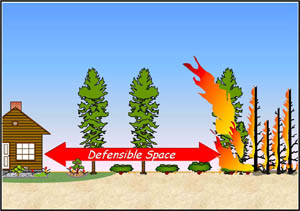
Siding is an expensive element of any home, and many types of siding are combustible. If the siding on your home is combustible it is vulnerable to direct flame contact and radiant heat exposure, and therefore it is important to keep the area within 5 ft. of your home free of combustible items, plants, and debris that could catch fire and brings flames dangerously close to the siding. Once ignited, flames from burning siding can encroach on windows and eaves – potentially endangering the entire house.
The overarching goal of defensible space is to prevent direct flame contact from occurring. Once direct flame contact occurs, it is hard to prevent damage or the destruction of the home.

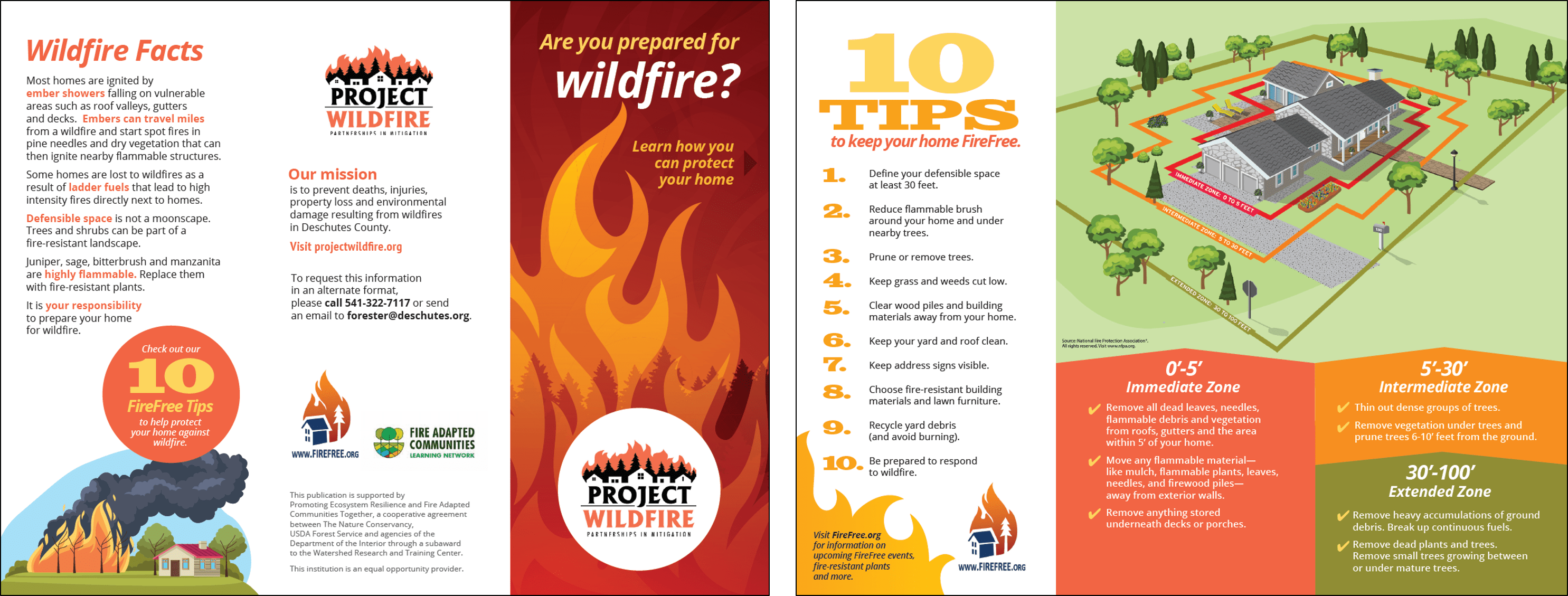
To prevent the ignition sources discussed above from impacting the built environment, think in zones.
The graphic directly above illustrates this concept and is available as a trifold for handing out or you can download a printer friendly version here.
Zone 1 is the 0-5 feet adjacent to the home and its attachments. This is an area that encircles the structure and all its attachments (wooden decks, fences, and boardwalks) up to 5 feet. It should be comprised of noncombustible materials, such as pavers, concrete, gravel or bare dirt.
Zone 2 is 5 to 30 feet from the home. This area encircles the structure and all its attachments (wooden decks, fences, and boardwalks) for at least 30 feet on all sides. Note: the 30-foot number comes from the very minimum distance, on flat ground, that a wood wall can be separated from the radiant heat of large flames without igniting.
-
Plants should be carefully spaced, low-growing and free of resins, oils, and waxes that burn easily.
-
Mow the lawn regularly. Prune trees up six to ten feet from the ground.
-
Space conifer trees 30 feet between crowns. Trim back trees that overhang the house.
-
Remove dead vegetation from under the deck and within 10 feet of the house.
-
Consider fire-resistant material for patio furniture, swing sets, etc.
-
Firewood stacks and propane tanks should not be located in this zone. If there is not enough space to move your woodpile 30 feet away, simply cover it with a canvas tarp.
-
Water plants, trees, and mulch regularly.
-
Consider xeriscaping if you are affected by water-use restrictions.
Zone 3 is 30 to 100 feet from the home. Plants in this zone should be low-growing, well irrigated, and less flammable.
-
Leave 30 feet between clusters of two to three trees, or 20 feet between individual trees.
-
Encourage a mixture of deciduous and coniferous trees.
-
Create ‘fuel breaks’, like driveways, gravel walkways, and lawns.
-
Prune trees up six to ten feet from the ground.
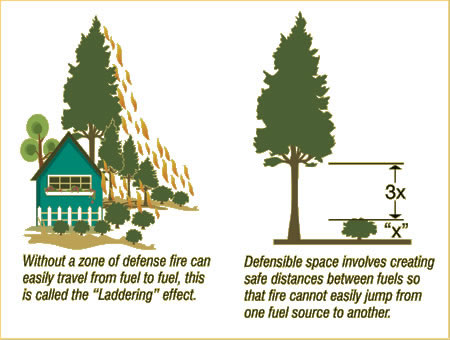
Firewise USA® Sites - Resources
Why should my community consider Firewise USA®?
Scientific research has shown the effectiveness and benefits of implementing wildfire mitigation concepts across individual property boundaries and throughout communities.
Since 2002, The Firewise USA® program has empowered neighbors to work together in reducing their wildfire risk. Join the growing network of more than 1400 recognized Firewise USA® Sites from across the nation taking action and ownership in preparing and protecting their homes against the threat of wildfire.
Through Firewise USA®, communities develop an action plan that guides their residential risk reduction activities, while engaging and encouraging their neighbors to become active participants in building a safer place to live. Neighborhoods throughout the United States are embracing the benefits of becoming a recognized Firewise USA® Site – and you can too!
Do we have to become Firewise USA®?
The short answer is no. There are many communities that work on their own wildfire preparedness without pursuing an official Firewise Recognition from National Fire Protection Association (NFPA).
Effective defensible space can give each individual home an 80-90% chance of surviving a wildfire. If each individual home in a Firewise Community does their part, the chances of surviving and recovering are exponentially higher.
However, gaining Firewise USA® recognition for your neighborhood is recommended by multiple fire agencies in Central Oregon. It is a way to organize and own your community’s wildfire preparedness in a way that makes sense for you and your neighbors. This is a grass root effort to design an action plan to make the entire community safer. We encourage those pursuing Firewise to think of it as a journey rather than a destination.
How do I become a Firewise USA® Site?
Using a five-step process, your community can get started and on their way to receiving their official Firewise USA® recognition status, and the honor of proudly displaying their own high-profile signage along with many other benefits.
The five steps of Firewise USA® recognition:
-
Obtain a wildfire risk assessment as a written document from your state forestry agency or fire department.
-
Form a board or committee, and create an action plan based on the assessment.
-
Conduct a “Firewise Day” event.
-
Invest a minimum of $25.43 (1 hour of volunteer work) per dwelling in local Firewise actions for the year in volunteer hours or fuel reduction costs.
-
Create a Firewise Portal account and submit an application to your state Firewise liaison.
